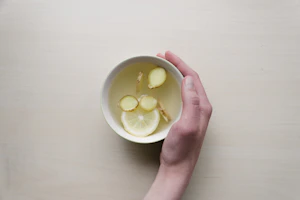Podcast
Questions and Answers
What is the most basic way to prevent cross-contamination?
What is the most basic way to prevent cross-contamination?
Keep raw and ready-to-eat food away from each other.
Which of the following are ways of preventing cross-contamination? (Select all that apply)
Which of the following are ways of preventing cross-contamination? (Select all that apply)
- Using Separate Equipment (correct)
- Cleaning and Sanitizing (correct)
- Prepping Food at Different Times (correct)
- Buying Prepared Food (correct)
What are ways of preventing time-temperature abuse? (Select all that apply)
What are ways of preventing time-temperature abuse? (Select all that apply)
- Ignoring temperature warnings
- Corrective Actions (correct)
- Monitoring (correct)
- Recording (correct)
TCS food should be thrown out if it stays in the temperature danger zone for four hours or more.
TCS food should be thrown out if it stays in the temperature danger zone for four hours or more.
Which of the following indicates TCS food is being time-temperature abused? (Select all that apply)
Which of the following indicates TCS food is being time-temperature abused? (Select all that apply)
What are different types of temperature-measuring devices?
What are different types of temperature-measuring devices?
What is the most important tool you have for food safety?
What is the most important tool you have for food safety?
What is the calibration nut on a bimetallic stemmed thermometer used for?
What is the calibration nut on a bimetallic stemmed thermometer used for?
Recording __________ regularly can help avoid time-temperature abuse.
Recording __________ regularly can help avoid time-temperature abuse.
TCS food has been __________ if it remains in the temperature danger zone for extended periods of time.
TCS food has been __________ if it remains in the temperature danger zone for extended periods of time.
A food handler must wash, rinse, and sanitize a cutting board after trimming raw chicken before preparing vegetables to avoid cross-contamination.
A food handler must wash, rinse, and sanitize a cutting board after trimming raw chicken before preparing vegetables to avoid cross-contamination.
A bimetallic stemmed thermometer must be inserted __________ into food to give an accurate reading.
A bimetallic stemmed thermometer must be inserted __________ into food to give an accurate reading.
A(n) _________ probe should be used to check the temperature of a large stockpot of chili.
A(n) _________ probe should be used to check the temperature of a large stockpot of chili.
Where is a time-temperature indicator (TTI) most commonly found?
Where is a time-temperature indicator (TTI) most commonly found?
What should a food handler do after dropping a bimetallic stemmed thermometer on the floor?
What should a food handler do after dropping a bimetallic stemmed thermometer on the floor?
A hanging thermometer in a walk-in cooler should be accurate to within how many degrees Fahrenheit?
A hanging thermometer in a walk-in cooler should be accurate to within how many degrees Fahrenheit?
The bimetallic stemmed thermometer has a dimple on it to indicate the end of the temperature-sensing area.
The bimetallic stemmed thermometer has a dimple on it to indicate the end of the temperature-sensing area.
An infrared or laser thermometer does not have to touch the surface of food to check the temperature accurately.
An infrared or laser thermometer does not have to touch the surface of food to check the temperature accurately.
Flashcards are hidden until you start studying
Study Notes
Cross-Contamination Prevention
- Keep raw and ready-to-eat foods separated to prevent cross-contamination.
- Use separate equipment, clean and sanitize surfaces, prepare food at different times, and consider buying prepared foods to mitigate risks.
Time-Temperature Abuse Prevention
- Monitor food temperatures regularly with appropriate tools.
- Record temperature data consistently to ensure time and temperature control.
- Implement corrective actions when deviations occur.
Temperature Danger Zone
- TCS (Time-Temperature Control for Safety) food is considered in the danger zone if held between 41°F and 135°F (5°C and 57°C).
- Significant pathogen growth occurs between 70°F and 125°F (21°C and 52°C).
- TCS food must be discarded if it remains in the danger zone for over four hours.
Handling TCS Food
- TCS food is time-temperature abused if it’s cooked to incorrect minimum internal temperatures, held at unsuitable temperatures, or cooled/reheated improperly.
Temperature Measuring Devices
- Various temperature-measuring devices include immersion probes for liquids, surface probes for flat surfaces, penetration probes for thin foods, air probes for ovens/coolers, infrared thermometers for non-contact readings, and time-temperature indicators (TTI).
Importance of Thermometers
- Thermometers, especially bimetallic stemmed thermometers, thermocouples, and thermistors, are crucial for ensuring food safety.
Bimetallic Stemmed Thermometer Features
- Key components include: calibration nut for accuracy, easy-to-read markings for quick checks, and a dimple that indicates the correct temperature sensing area.
Calibration Methods
- Ice Point Method: Adjust thermometer using water and ice to read 32°F (0°C).
- Boiling Point Method: Adjust using boiling water to read 212°F (100°C) without touching the pan.
Guidelines for Thermometer Use
- Ensure thermometers are cleaned and sanitized regularly, calibrated for accuracy within +/- 1°F, used only in shatterproof casings, and temperatures checked frequently.
Recording Temperatures
- Regularly record and post temperature readings outside coolers, freezers, prep areas, and near cooking equipment to avoid time-temperature abuse.
Food Safety Regulations
- TCS food must be discarded if held in the temperature danger zone for four hours or longer.
- Any cutting board used for raw chicken must be washed, rinsed, and sanitized before preparing other foods.
Thermometer Usage
- A bimetallic stemmed thermometer must be inserted into food up to the dimple for an accurate reading.
- An immersion probe is required for checking large batches like a stockpot of chili.
Location of Time-Temperature Indicators (TTI)
- TTIs are commonly attached to food shipment packaging to provide real-time temperature tracking.
Thermometer Maintenance
- If a bimetallic stemmed thermometer is dropped, it should be recalibrated before use.
Temperature Accuracy
- A hanging thermometer in a walk-in cooler should maintain accuracy within 3°F.
- Infrared thermometers do not need to contact food surfaces to provide accurate temperature readings, unlike bimetallic stemmed thermometers which indicate the sensing area with a dimple.
Studying That Suits You
Use AI to generate personalized quizzes and flashcards to suit your learning preferences.




